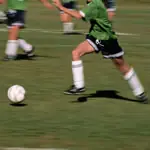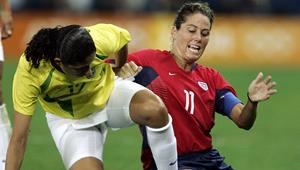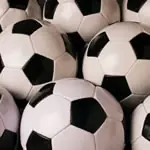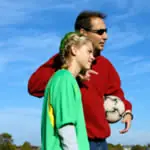
Developing players who can perform crisp, accurate passes to teammates is essential to improving overall play. With the following drills, you will hone these passing skills and develop your players' ability to use the non-dominant foot as well as the dominant foot.
Static Passing
Have the players partner-up and form two lines about 10 yards apart, facing each other. One player starts with the ball and passes to their partner. Make sure there is adequate room between the players for errant passes.
If you find that the distance between the lines is too great, stop the drill and bring them closer together. The drill must be geared for success to build confidence.
Watch for proper striking technique, proper foot placement, eye-foot coordination (head down) and follow through.
Coaching Points
- Proper weight on the ball. Weight is the speed, spin and/or pace of the ball. Too little weight and the ball won't reach the target...too much and it is difficult to receive.
- Accuracy. The plant foot is a big determiner of where the pass will go. Generally the pass will go where the plant foot toes point. You'll see a lot of toes turning outward at the beginning. This should be corrected.
- Stress that the player should not step back to kick the ball. A common error at the young ages is for the player to stop the ball, take one or two steps back and then pass it.
- Work both the dominant and non-dominant foot. Build success first with the dominant foot and then begin to work the non-dominant foot at a rate equal to twice that for the dominant one.
The Triangle
The basic shape for this drill will be a triangle and the first basic tactical concept is of support.
In its simplest form, the concept of support should find the ball carrier with players to their right and left for passing options.
Set up cones as markers where the players should stand. Designate one player as the center player and have that person pass to the left and then receive the ball back. Then pass to the right and receive the ball back. After 10 repetitions change the center player and repeat.
Coaching Points
- Watch for body position on the pass. The plant foot is still the biggest determiner of where the ball will go.
- The receiving player should take the ball on the foot opposite the direction from which the pass is coming. If the pass is coming from the left, the right foot receives, and vice versa. This is called opening up to the field of play.
One-Touch Passing
Have the players form two lines about 10 yards apart facing each other. Each player in one line starts with the ball. Again, make sure there is adequate room between the players for errant passes.
Have the players begin passing to their partner. At the youngest age have the ball rolled to the kicking partner. When the ball arrives, the player must immediately kick, or "one touch", the ball back to their partner who picks it up and rolls it back.
Once everyone is comfortable with one-touch you can progress to having both partners one touch the ball to each other. Make a game of it. Have them count how many times they can keep the ball going without either one missing.
Progress to a game where on each successive kick, the players take one step closer to each other until the ball is ricocheting back and forth at a rapid pace.
 See more soccer training tips or find a soccer league near you.
See more soccer training tips or find a soccer league near you.








Discuss This Article